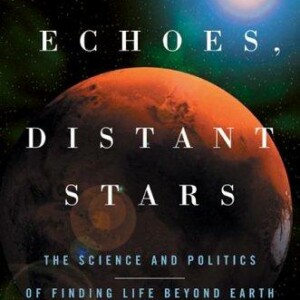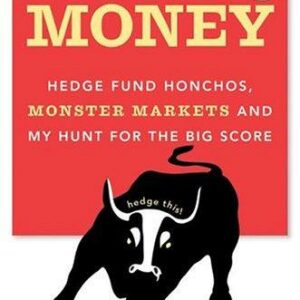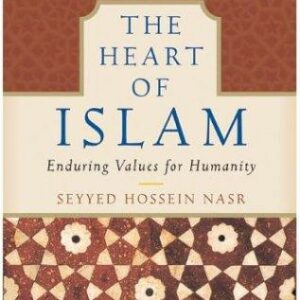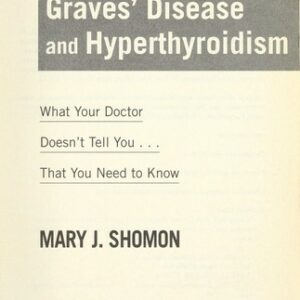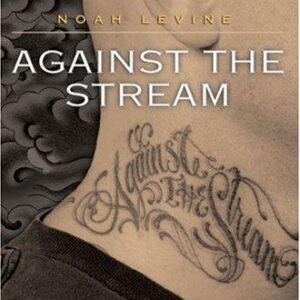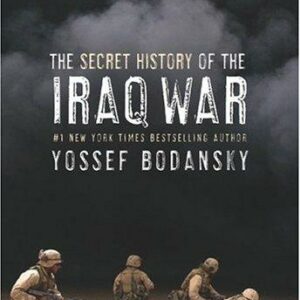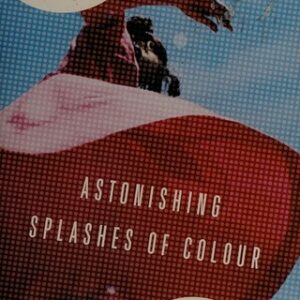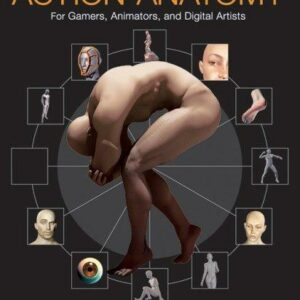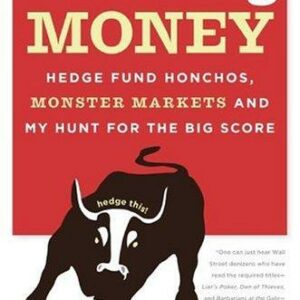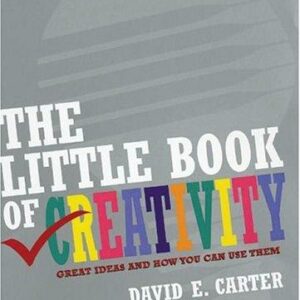Subtotal: $17.00
Dolls! Dolls! Dolls!
$17.00
| Title | Range | Discount |
|---|---|---|
| Trade Discount | 5 + | 25% |
- Description
- Additional information
Description
Description
“A blissful treasure trove of gossipy insider details that Dolls fans will swiftly devour.”
—Kirkus Reviews
The unbelievable-but-true, inside story of Jacqueline Susann’s pop culture icon Valley of the Dolls–the landmark novel and publishing phenomenon, the infamous smash hit film (“the best worst movie ever made”), and Dolls‘s thriving legacy today
Since its publication in 1966, Jacqueline Susann’s Valley of the Dolls has reigned as one of the most influential and beloved pieces of commercial fiction. Selling over thirty-one million copies worldwide, it revolutionized overnight the way books got sold, thanks to the tireless and canny self-promoting Susann. It also generated endless speculation about the author’s real-life models for its larger-than-life characters. Turned in 1967 into an international box-office sensation and morphing into a much-beloved cult film, its influence endures today in everything from films and TV shows to fashion and cosmetics tributes and tie-ins. Susann’s compulsive readable exposé of three female friends finding success in New York City and Hollywood was a scandalous eye-opener for its candid treatment of sex, naked ambition, ageism, and pill-popping, and the big screen version was one of the most-seen and talked-about movies of the time.
Dolls! Dolls! Dolls! digs deep into the creation of that hugely successful film–a journey nearly as cut-throat, sexually-charged, tragic, and revelatory as Susann’s novel itself–and uncovers how the movie has become a cherished, widely imitated camp classic, thanks to its over-the-top performances, endlessly quotable absurd dialogue, outré costumes and hairdos, despite the high aspirations, money, and talent lavished on it. Screenwriter-journalist-film historian Stephen Rebello has conducted archival research and new interviews to draw back the velvet curtain on the behind-the-scenes intrigue, feuds and machinations that marked the film’s production. In doing so, he unveils a rich, detailed history of fast-changing, late 1960s Hollywood, on screen and off.”With great detail and heavy research, the book is as heady and colorful as the pulsating Pucci prints Susann so famously wore. It’s everything you could have ever possibly wanted to know about the book history loved to hate.”
—Vogue
“Full of surprises and even suspense — revealing how cutthroat and puerile Hollywood can be. . . . A book to simply enjoy, especially after seeing the film, which I strongly recommend you do.”
—The Washington Post
“Through extensive research and interviews, Rebello draws back the curtain on Susann’s soapy saga, offering insight into the behind-the-scenes secrets in bringing the book to the big screen.”
—The Hollywood Reporter
“Rebello is a skilled writer and shrewd observer of Hollywood. . . . If gossip is your doll, Rebello has the hookup.”
—Los Angeles Times
“This book is light as a Maribou Teddy and I really recommend reading it in the tub.”
—Rachel Syme, via Twitter
“Dolls! Dolls! Dolls! offers an entertaining behind-the-scenes look at the movie’s bumpy creative process.”
—The A.V. Club
“Anyone seeking nonfiction escapism will be well served by Rebello’s loving dissection of a camp classic’s print and screen incarnations.”
—Publishers Weekly
“A blissful treasure trove of gossipy insider details that Dolls fans will swiftly devour. . . . Written with a cinematic excitement and giddiness bordering on satire, this is an indulgent treat for Dolls fans. . . . Memorable reading for die-hard devotees and those seeking to relive all the breathless histrionics.”
—Kirkus Reviews
“Rebello packs tons of information into this loving look at a cultural and cult phenomenon, sprinkling gossipy bits among the stats. . . . Indulge yourself. Fans will love! love! love!, and newcomers will enjoy the Hollywood insider aspect.”
—Library JournalStephen Rebello is a screenwriter and author of the bestselling Alfred Hitchcock and the Making of ‘Psycho‘. He has written screenplays for Disney, Paramount, Focus Features, and others. His other books include Reel Art and Bad Movies We Love, written with Edward Margulies, and he has written for GQ, Playboy, Movieline, Hollywood Life, Statement, More, and Cosmopolitan. Born in Massachusetts and a resident of Southern California, he is a contributing editor at Playboy.
Chapter One
Jackie
Valley of the Dolls is the novel Jacqueline Susann was born to write. In a way she had been rehearsing for it since her birth on August 20, 1918, in Philadelphia. She was the sole child of a prim and fastidious schoolteacher, Rose (Jans), and Robert Susan, a dashing, successful portrait painter and womanizer who charged high-society types $5,000 (roughly $63,000 today) to flatter them shamelessly on canvas. Rose, a woman of some force and agency, took it upon herself to append another “n” to her daughter’s Dutch and Sephardic Jewish surname. Determined to ensure that that new name would be correctly pronounced “SuZANN” rather than “Susan,” Rose inadvertently provided her daughter with a stage name. A posed photo of Susann and her father from the summer of 1926 shows the young girl in a long-sleeved linen shift-unsmiling, hair bobbed, bangs brushing her grave, dark eyes. Her right hand rests on her breast. Her left lies intimately draped over her father’s shoulder. They’re on the front stairs leading to the grand porch of their columned home, and the dark-haired, faintly Hollywood-inspired Susan, dressed in plus fours, saddle shoes, and argyle socks, stares off with a faraway air of restlessness. Jackie used to confide to her friends about her dad’s essential unreachability. Decades later she told journalists that as early as age eight, her father lamented not having a male heir. When he said, “There will be no one to carry on the name Susan,” little Jackie assured him, “I’ll carry it on. I’m going to be an actress.” The way Susan told it, her father grinned and said, “Well, if you’re going to be an actress, be a good actress. Be a people-watcher.”
Adoring her seductive, elusive father as she did, she took his advice to heart, and years later he would go on to become her model for a number of the attractive, unfaithful, and essentially unattainable male antiheroes in her novels. As one of his many acts of defiance against his wife, he fed his little girl’s show business fantasies. He squired her to all the newest movies and plays. He fostered her dreams of stardom and delighted that she plastered her bedroom walls with photos of (mostly female) theatrical idols of the day. He crowed proudly when she auditioned for local plays and radio shows. On April 16, 1936, in a beauty contest for which her father was a judge, she was crowned at age seventeen “Philadelphia’s most beautiful girl.” Buoyed by Robert Susan’s constant and florid boosterism, she would agree with that assessment. As part of the beauty contest prize, she was sent to New York for a Warner Bros. screen test. They passed. Undeterred and now more than ever determined to make a name for herself, she tore off to New York to stay, over Rose’s howls of protest. Jackie, as she now preferred being known, took up residence at Kenmore Hall, a compact 145 East Twenty-third Street hotel, where, as she was well aware, the residents once numbered Nathanael West, Erskine Caldwell, and Dashiell Hammett, who finished The Maltese Falcon there. (Decades later, in Valley of the Dolls, patrician heroine Anne Welles would room at the Martha Washington Hotel at 29 East Twenty-ninth Street between Madison Avenue and Park Avenue South.) Jackie’s fellow residents included many show people on the way up or down. Among them was a diminutive, tough-tender, scrappy young vaudeville performer named Ethel Agnes O’Neill-nicknamed Effie-with whom she’d become friends. Effie would go on to be an inspiration for Valley of the Dolls heroine Neely, a forename Susann poached from Betty Smith’s 1943 novel, A Tree Grows in Brooklyn. Susann would meld elements of Effie with thinly disguised aspects of the life of the blazingly talented, gallant but self-destructive Judy Garland, the film, stage, and recording powerhouse. Nothing was lost on Susann, who, heeding her dad’s advice, studied people constantly and who possessed a remarkable memory for dialogue.
Jackie launched a full-on assault at stardom. After dozens of unsuccessful auditions, she managed to snag a tiny role in a big show-the original 1936 Broadway production of The Women. Her father had called in a favor to get her cast, but Jackie got sacked during rehearsals. Still, she refused to completely let go of the chance to appear in Clare Boothe Luce’s seminal all-female comedy, which famously featured crackling, bitchy dialogue and two knock-down, drag-out catfights. Even after her dismissal, she took the opportunity to study the play by watching every performance from the wings. While hoping to be rehired, she also developed what Irving Mansfield, her publicity flack/producer/promoter-to-be, would later describe as a “fierce crush” on the show’s leading lady, Margalo Gillmore. Gillmore viewed Susann’s intense Eve Harrington-worthy devotion to her as “a bit much.” In the end, Jackie did get hired to replace Beryl Wallace (the showgirl tootsy of theater producer-showman Earl Carroll) as the lingerie model billed as “First Model.” She began performances on June 2, 1937. Meanwhile, Jackie grew close to actress Beatrice Cole, an elegant and refined blond beauty billed in The Women as “Second Model.” Susann and Cole (both would become prototypes for the cool, classy Anne Welles character in Valley of the Dolls) modeled and demonstrated such products as Lux Toilet Soap. Jackie doggedly auditioned for showier roles, but it took meeting press agent Irving Mansfield at a showbiz-friendly Walgreen’s to heat things up. Jackie, who frequently referred to herself as “a tearing beauty” and “lovely me,” had mercenary intentions in her attraction to the physically unprepossessing Mansfield, the publicist for such top radio programs as The Rudy Vallee Show. Letty Cottin Pogrebin, founding editor of Ms. magazine, who first encountered Mansfield when she was assigned to publicize the novel Valley of the Dolls, likened Irving to “a Jewish uncle, a throwback to an earlier generation who’d turned himself into a character out of Damon Runyon and Guys and Dolls, all slicked-down hair, flashy suits, fast-talking-and, as the perfect press agent, always selling you something. He was a can-do person, which I liked.” Although Mansfield was not Susann’s type-aside from older actresses, she found Jewish comedians irresistible-he was nevertheless a shrewd, unusually well-connected NYU grad who in 1946 became a major producer with CBS, where he developed high-profile programming, including Arthur Godfrey’s Talent Scouts and The Jane Froman Show. He possessed the clout and contacts to do for Jackie what the press-agent character Mel could do for Neely in Valley of the Dolls: get her flattering mentions and photos in all the widely read gossip columns, push and prod her to the next level. In Jackie’s mind, all that stood between herself and stardom was a publicity blitz. Says Pogrebin, “Her self-confidence and self-possession were breathtaking and unshakable. She wasn’t going to be somebody, she already was somebody.”
Jackie and Irving set up residence in a swank Essex House apartment, but when Mansfield was otherwise engaged, Susann leaped headfirst into a fling with the very married, much older Eddie Cantor, as big a deal as anyone could be in vaudeville, the Ziegfeld Follies, radio, films, and stage. For Susann such side affairs with father substitutes tended to be transient and mercenary. The Cantor liaison produced the kind of dividend she most valued: a walk-on in the star’s newest Broadway vehicle, Banjo Eyes, which opened in December of 1941. In March of 1942, Jackie repeated the pattern. Irving had been drafted into the army, and Jackie was in Chicago playing in the all-female cast of Cry Havoc. Also appearing in town at the time was Joe E. Lewis, the cocky, mobbed-up comedian often called “the father of stand-up.” Lewis had been a pop singer in Chicago nightclubs and gin joints during Prohibition. Famous for his ribald patter between songs and for his boozing it up onstage, Lewis enraged the owners of his North Side home club the Green Mill when he announced he was relocating to the rival Rendezvous Club CafŽ. A week after Lewis’s successful opening, Al Capone’s enforcers invaded the entertainer’s hotel room, fractured his skull, slit his throat, and sliced off part of his tongue. Lewis recovered, reinvented himself, and enjoyed a major comedy career. Frank Sinatra called him one of the four or five greatest artists in American pop history and played him in the movie biography The Joker Is Wild.
As unlikely as it may seem, Susann fell hard for Lewis. She took up residence at the Royalton and left Mansfield, telling a friend that she refused to live with a man who now only made an army recruit’s salary. After Mansfield’s army discharge, he and Jackie recoupled circa 1946, but Susann never stopped caring for Joe Lewis. When she acquired her adored black poodle in the ’50s, she named the dog Josephine in tribute. A catchphrase of Lewis’s nightclub act was “You only live once-but if you work it right, once is enough.” On his deathbed in 1971, Lewis told Susann he was mistaken: “Once is not enough.” Jackie made that the title of her third novel, published in 1973.
But if Susann was sufficiently satisfied with ex-G.I. Mansfield’s booming career to relocate with him to the Hotel Navarro on Central Park South, she was much less so with her casting in New York stage revivals of Blossom Time and Let’s Face It. Something a bit better came up in 1945 with A Lady Says Yes, a short-lived Broadway musical featuring bubbly, buxom, statuesque 20th Century Fox contract blonde Carole Landis, one of a number of stunners signed by priapic studio boss Darryl F. Zanuck with an agreement of guaranteed sexual access. Vibrant, good-hearted, well-read Landis, the victim of an almost Dickensian childhood of abandonment and sexual abuse, was similarly exploited by Hollywood, where she was nicknamed, variously, the Chest, the Blonde Bomber, and the “Ping” Girl.
While appearing together in A Lady Says Yes, Susann and Landis-both of whom had been sexually involved with vaudevillian, actor, and singer George Jessel-grew exceedingly close. (Jessel famously renamed Frances Gumm as Judy Garland; twenty-two years after A Lady Says Yes, he would also appear as himself in an awards ceremony scene in Valley of the Dolls.) Landis gifted Susann with earrings and a fur coat; Jackie described to several of her closest female friends how “sensual it had been when she and Carole had stroked and kissed each other’s breasts.” After audiences said no to A Lady Says Yes, the two stayed in touch during Landis’s two-year marriage to a Broadway producer and, after their divorce, through an intense, tortured affair with caddish actor Rex Harrison. But in 1948, at age twenty-nine, the much-married Landis ended her life with a Seconal overdose, reportedly due to her despondency over Harrison’s refusal to divorce wife Lilli Palmer and marry her. Susann kept the tragic Landis foremost in her mind when she created the character of the gorgeous, modestly talented showgirl Jennifer North in Valley of the Dolls.
Susann and Mansfield suffered a life-changing tragedy with the birth of their son, Guy Hildy Mansfield (his middle name a tribute to cabaret singer Hildegarde, another of Susann’s crushes), on December 6, 1946. The handsome baby displayed behavioral issues from the outset and, at age three, was diagnosed with what doctors would today call severe autism-about which little was known at the time. Guy’s doctors prescribed a series of shock treatments that did nothing to lessen the little boy’s agonies and only intensified those of his parents. The Mansfields were shattered when told that Guy would require institutionalization for the rest of his life. Several close friends, such as actress Joan Castle, asserted that Jackie’s devastation precipitated and accelerated her voracious appetite for prescription drugs. Guy would so haunt Susann that she tried to exorcise some of her grief in the Valley of the Dolls character of childlike singer Tony Polar, institutionalized as a young man because of a degenerative hereditary disease. Susann wrote the novel in a home office converted from what had been Guy’s nursery. She came to call the room her “torture chamber.”
Through the late ’40s into the ’50s, Susann poured herself into several pursuits. One was her complex and troublesome fixation on Ethel Merman. Becoming chummy with the siren-voiced fifty-one-year-old musical comedy legend quickly turned into Susann behaving, according to singer Hildegarde’s manager Anna Sosenko, “absolutely loony, like a twelve-year-old . . . she had really fallen for her.” The open-secret relationship between Susann and Merman raised eyebrows among denizens of the Great White Way, as had rumors of Susann’s earlier relationship with fashion designer Coco Chanel. Manhattan partygoers attest to having witnessed Merman and Susann making out late one night on a couch-horizontally and at some length. Susann proudly boasted to intimates how she had performed a sensual bump and grind private striptease to help Merman prepare for her career-defining “Rose’s Turn,” the now legendary 11 o’clock number in the hit 1959 Jule Styne-Stephen Sondheim musical Gypsy.
Though both women were volatile and quick to anger, their relationship seemed to be going along swimmingly until a loud, nasty argument broke out between them at a New York restaurant. Things got so heated that Irving hurled a drink at Merman, not only publicly humiliating bona fide show business royalty but also outraging his wife. According to multiple sources, Susann was shaken by the incident turned up that night at Merman’s apartment door, loudly weeping and repeatedly wailing, “I love you!” Susann grew so unhinged that Merman called security to have her ejected and, from that time forward, froze her out of her life. Susann, shaken and desolate, threatened suicide convincingly enough that Irving persuaded her to check into a psychiatric hospital, where she suffered a nervous collapse. Years later she exacted revenge by using Merman as an inspiration for foul-mouthed, combative, sexually frustrated, slipping-down-Broadway gargoyle Helen Lawson in Valley of the Dolls.
On her release from what Helen Lawson would indelicately call “the nuthouse,” Jackie redoubled her mission to immortalize her father by becoming a famous actress. Or a famous something. She grew weary of being “cast as what I looked like-a glamorous divorcee who gets stabbed or strangled.” After the Merman fiasco, Susann was determined to get herself back in the public eye, whatever it took. She became the on-air spokesmodel, writer, and producer of TV ads for the Schiffli Lace and Embroidery Association, and for five years, she got constant exposure as “the Schiffli Girl” on such programs as The Mike Wallace Interview and The Ben Hecht Show. She’d sometimes appear in the ads with her beloved poodle, Josephine. It was not enough, though. Susann held an unshakable belief that she could write. She and cowriter, Bea Cole, had, after all, achieved a bit of success back in the mid-1940s with a tickle-and-tease sex farce titled The Temporary Mrs. Smith; directed by the droll actress Jessie Royce Landis, the play opened on Broadway in December of 1946 with the new title Lovely Me. RisquŽ enough to pack the theater early in its run, the shows was so trounced by critics that ticket sales slowed and the producers rang down the curtain after thirty-seven performances. Daily News critic Douglas Watt’s review enraged Susann to the point that she walloped him in full view of other famous, gossipy patrons at Sardi’s.
US
Additional information
Additional information
| Weight | 10.8 oz |
|---|---|
| Dimensions | 0.7000 × 5.5000 × 8.4000 in |
| Imprint | |
| ISBN-13 | |
| Author | |
| Audience | |
| BISAC | |
| Subjects | movie book, strategy, money, economics books, film history, autobiographies, music biographies, feminist gifts, business books, biographies of famous people, gifts for movie lovers, biographies, film making, pop culture gifts, BUS070110, Valley of the Dolls, patty duke, valley of the dolls movie, movie history, sharon tate, jacqueline susann, drama, historical, business, BIO005000, american history, biography, Film, movie, music, comedy, creativity, history, economics, hollywood, cinema, economy, autobiography, movies, character, pop culture, movie books |
| Format |



